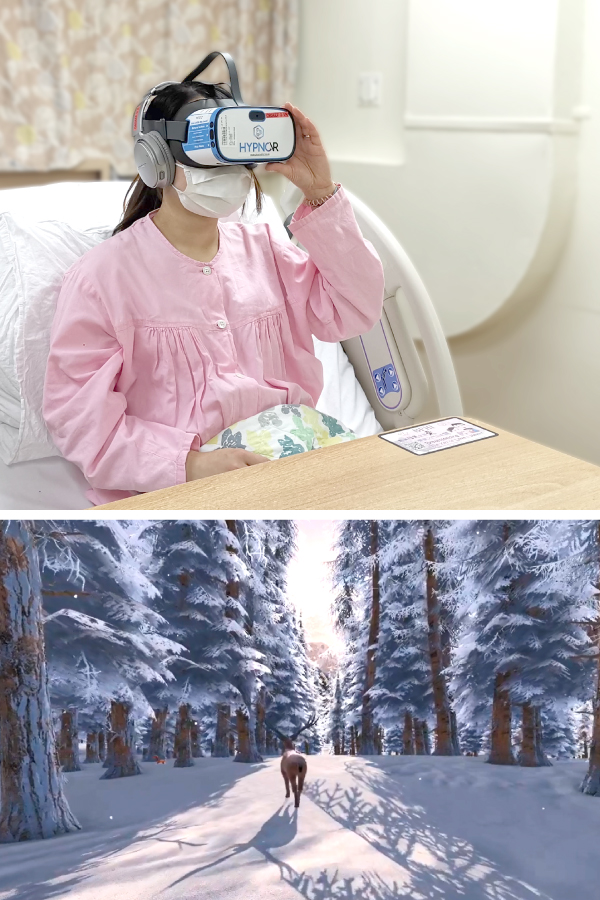VR helps reduce pain in labour

HypnoVR
Functions and advantages: The HypnoVR headset gives users the opportunity to relax and immerse themselves in 360° virtual reality (VR) scenes (pictured), including Japanese cherry blossom, diving, forests, and snowy mountains, with a soundtrack of gentle, soothing music. The hypnotic effects of the VR scenes reduce anxiety in pregnant women. The range of VR scenes can be updated when necessary.“Almost every mother-to-be who comes to the labour ward will ask for ways to relieve pain,” explains Ma Ka-yan, Advanced Practice Nurse of Department of Obstetrics and Gynaecology at Prince of Wales Hospital. “They inevitably feel anxious and nervous in an unfamiliar environment with the cries and shouts of other women in labour around them.” Ka-yan and her team have explored different ways with smart elements to relieve pain and stress and discovered VR pain relief technology had been used in dental extractions, local anesthesia surgery, and other medical procedures. So, in 2021, they introduced HypnoVR headsets in a pilot programme for women in a stable condition going into labour from 32 weeks of pregnancy upwards. “In the past, we used non-pharmacological pain relief methods such as birth balls, warm compresses, and music therapy, but women in labour still felt anxious because of the environment on the ward,” she says. “However, when they are immersed in a VR world, they can detach themselves and relax by diverting their attention.”
Department Operations Manager Siu Ka-yi, who is also a hypnotherapist, says the VR scenes on the device incorporate exercises used in hypotherapy, helping women relax and balancing their hormones. “There were suggestions we should include games, shopping, or even movies. But these activities require concentration and can easily lead to more anxiety,” Siu recalls. “When women in labour use the VR device, healthcare staff can view the scenes they are watching through a mobile device, allowing analysis of which scenes are more effective.” The team conducted a survey of 400 pregnant women who had used HypnoVR, and found it decreased their levels of anxiety by an average of 10%. “Currently, VR pain relief is already listed as a regular option for non-pharmacological pain relief on the labour ward,” says Siu. “Mothers-to-be proactively inquire about it, and we are planning to extend HypnoVR to the gynaecology to help relieve the pain of patients undergoing hysteroscopy.”